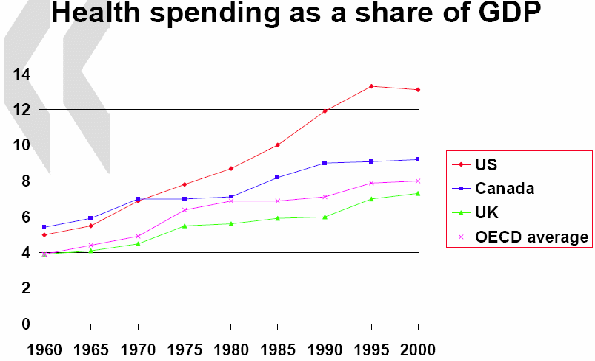This is not a competitive market:
Pharmaceutical company Kaléo – already under fire for raising the price of an overdose antidote – now plans to put an alternative to the EpiPen on the market for more than seven times the cost of the leading $608 drug.
Kaléo’s epinephrine injector, used to stop severe allergic reactions, will go on sale for $4,500 for a pack of two beginning on February 14. The auto-injector’s innovative audio instructions walk caregivers through administering less than $5 worth of epinephrine.
Remarkably, because of a system of coupons and discounts, Kaléo’s epinephrine injector Auvi-Q may have the lowest out-of-pocket costs for patients, a strategy some critics say may help some customers, but leads insurance companies to redistribute the cost of the drug through insurance fees to remain profitable.
The materials in such epinephrine injectors are worth about $8.
This is market failure. In a free market without collusion, if something is this high-priced, the price drops to more closely match the cost of production as other producers move into the market. It does not radically increase. As it stands, if you need an epinephrine injector and don’t have one, you stand a good chance of dying.
The rational reaction to these sorts of market failures, increasingly common in pharma, would be: (1) to either restructure the market to prevent them, which would require breaking up big pharma companies, streamlining approval processes, and allowing reverse-engineered knock-offs, or; (2) more simply, for the government to just manufacture them itself and charge a fair price.
There are some government services which should be kept entirely in-house. (The military, for example. Mercenaries are failure mode for any government.) There are many other services for which the government should be one provider among a number. The government stays in the business, providing about a third of the service; because if you aren’t in the business yourself you can’t always know if you’re being rooked by private companies and if you are being rooked, it’s very difficult to do anything about it because you don’t have the expertise to provide the service yourself.
At the same time, you want private companies involved to keep the in-house providers honest. You have multiple contractors, and those who do the best for the least are rewarded, so they have incentives to improve. You swap out the lowest performing ones on a regular basis, especially allowing a few upstarts in at the lowest viable level, so that radical new ideas can be tried.
If those new ideas work, everyone, government and private, adopt them.
At any rate, the market failures in pharma, with price markups in the thousands to tens of thousands of percents, are now so common that it’s clear that a radical solution is needed. The simplest solutions are price control and government getting into the business. Ideally, both should be done at the same time.
Note that price control includes forcing companies to take a profit. Dumping is (theoretically) illegal for a reason. If the government was to get into epinephrine injectors, for example, the logical solution for private enterprise would be to undercut their prices until the government pulled out because, “The private sector is more efficient.” Then, once the government was out of the business, they would jack their prices back up.
So you mandate a healthy profit, and because you’re in the business, you have a decent idea what a healthy profit is, not just for manufacturing, but also for distribution, sales, and so on. “You will make inflation +X percent on this.”
None of this is particularly complicated to do, in theory or in practice, though that isn’t to say that the technical details of setting it up are easy. But pharma is full of scientists and engineers who hate their jobs, and there have been vast waves of lay-offs as well; there’s plenty of expertise lying around.
I should add that this is a solved problem. It is simple to fix. This sort of price-gouging simply wasn’t tolerated in the past, and it is now, and pharma executives know it. Stop tolerating it, and it will go away.
But private pharma is a stupid way to invent and produce drugs anyway. They spend more on advertising than on research, they sponge off publicly-funded research, and they have vast incentives towards palliatives because a pill a day for life is far more profitable than a cure.
Medicines in the public interest, such as new antibiotics, receive little research because they are not profitable, and medicines long out of patent are subject to horrific price-gouging, and so on.
If you’re sick, you’ll pay almost anything for a cure. Medicine, drugs, and medical devices are one of the last things which should be provided through the private sector. If they are, they must be very highly regulated or in an engineered market with careful oversight–one from which the profit motive is largely excised at any level where decisions of patient care are being made.
The fact that our societies can no longer manage something as simple as drug prices is yet another sign of deep social failure.
The results of the work I do, like this article, are free, but food isn’t, so if you value my work, please DONATE or SUBSCRIBE.


